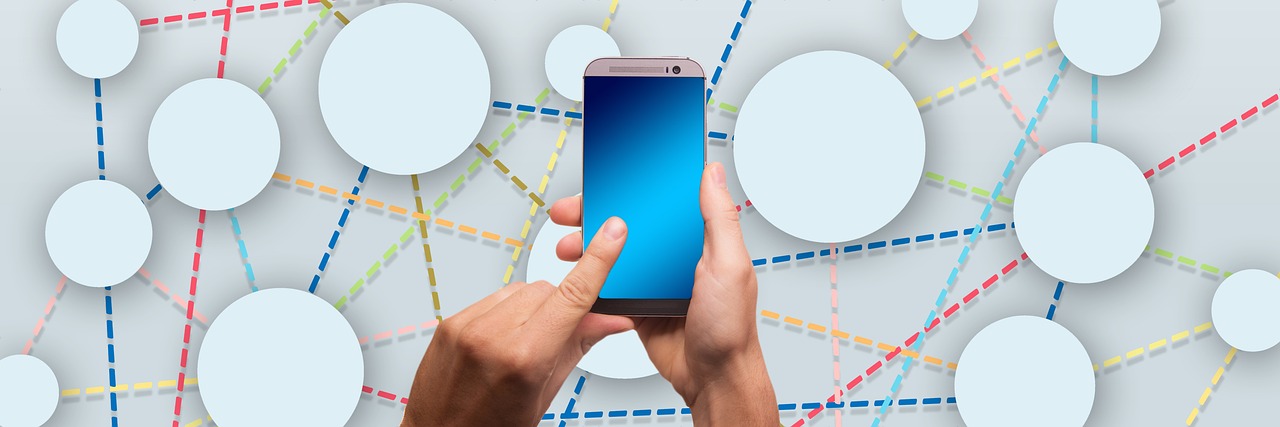Social Media and Online Predators: What Everyone Should Know
In today's digital age, social media has become an integral part of our lives, connecting us with friends, family, and the world at large. However, with this connectivity comes a dark side that many are unaware of—online predators lurking in the shadows, waiting to exploit the vulnerabilities of unsuspecting users. These predators are not just faceless strangers; they can be anyone, from a seemingly harmless friend request to a charming stranger in a chat room. Understanding the risks associated with social media platforms is crucial for everyone, especially for parents, children, and educators. This article aims to shed light on the tactics employed by these predators, the signs of online grooming, and the measures we can take to protect ourselves and our loved ones.
Online predators thrive on the anonymity that the internet provides, using it as a shield to hide their true intentions. Their primary goal is often to manipulate and exploit vulnerable individuals, whether they're children or adults. Predators are skilled at identifying those who may be seeking attention, support, or validation, and they often use psychological tactics to gain trust. For instance, they may pose as someone relatable, sharing false stories that resonate with their target's experiences. This emotional manipulation can create a false sense of safety, making it easier for them to engage in harmful behaviors. Understanding these tactics is the first step in recognizing and combating these threats.
Recognizing the signs of online grooming is essential for prevention. Grooming is a process where predators build a relationship with their target to gain their trust and manipulate them into engaging in inappropriate behavior. Some common behaviors and red flags include:
- Excessive communication: Predators often bombard their targets with messages, making them feel special and wanted.
- Secrecy: If a child is suddenly secretive about their online activities or becomes defensive when asked about their interactions, it could indicate grooming.
- Inappropriate topics: If conversations with a stranger shift to sexual or inappropriate topics, it’s a significant red flag.
By being aware of these signs, parents and guardians can take proactive steps to protect their children from potential harm.
Social media platforms play a significant role in either facilitating or combating online predation. Companies like Facebook, Instagram, and Snapchat have started to recognize the dangers that their users face and are implementing various safety measures. For example, many platforms have developed algorithms to detect suspicious behavior and flag it for review. Additionally, they provide users with resources and tools to report inappropriate content or interactions. However, while these measures are a step in the right direction, they are not foolproof, and vigilance from users remains essential.
Many social media sites offer safety features designed to protect users. These tools include:
- Privacy settings: Users can customize their profiles to limit who can see their information.
- Reporting tools: Most platforms have straightforward processes for reporting suspicious behavior or harassment.
- Blocking features: Users can block individuals who make them uncomfortable, preventing further contact.
Understanding and utilizing these features can significantly enhance user safety and help mitigate the risks posed by online predators.
Educating users about online safety is crucial. Numerous initiatives and resources aim to raise awareness about the risks associated with online interactions. Schools, community organizations, and even social media platforms themselves often provide educational materials to help users navigate the digital landscape safely. These resources typically cover topics such as recognizing suspicious behavior, understanding privacy settings, and knowing when to seek help. Empowering users with knowledge can create a more informed and safer online community.
Parents play a vital role in safeguarding their children online. Open communication about online experiences can help children feel comfortable discussing any uncomfortable interactions they may encounter. It’s essential for parents to set clear guidelines around social media use, such as time limits and acceptable behavior. Monitoring children's online activities can also be beneficial, but it’s crucial to strike a balance that fosters trust rather than creating a sense of invasion. Regular discussions about online safety can empower children to make informed decisions and recognize potential threats.
Understanding the legal framework surrounding online predation is essential for effective reporting. Laws vary by country and region, but many jurisdictions have specific statutes addressing online harassment, exploitation, and child safety online. If someone encounters predatory behavior online, it's crucial to document the interactions and report them to the appropriate authorities. Many social media platforms also have dedicated teams to handle such reports, ensuring that the necessary actions are taken against offenders.
Collaboration between social media companies and law enforcement is crucial in combating online predation. By working together, these entities can enhance safety protocols and response efforts. Many platforms have established partnerships with law enforcement agencies to facilitate the reporting and investigation of online crimes. This collaboration not only helps to protect users but also serves as a deterrent to potential predators.
Building a supportive community can significantly help victims and their families. Numerous resources, support groups, and educational programs are designed to empower individuals against online threats. Organizations dedicated to online safety often provide counseling, legal advice, and educational workshops to help victims recover and learn how to protect themselves in the future. Being part of a community that understands these challenges can make a significant difference in the healing process.
Q: What should I do if I suspect my child is being groomed online?
A: It's essential to approach the situation calmly. Start by talking to your child about their online interactions and encourage open communication. Document any suspicious behavior and consider reporting it to the platform and local authorities.
Q: Are there specific signs that indicate a child may be engaging with a predator?
A: Yes, look for changes in behavior such as secrecy, withdrawal from family activities, or an unusual interest in online friends. If they seem anxious or upset about their online interactions, it could be a red flag.
Q: How can I educate my child about online safety?
A: Discuss the importance of privacy settings, recognizing suspicious behavior, and the need to report uncomfortable interactions. Encourage them to come to you with any concerns they may have.

Understanding Online Predators
In our increasingly digital world, the term online predator has become more than just a buzzword; it represents a serious threat to individuals, especially children and teenagers. These predators exploit the anonymity and vast reach of the internet to target vulnerable individuals, often using sophisticated tactics to gain trust and manipulate their victims. Understanding who these predators are and how they operate is crucial for everyone, from parents to educators and the young users themselves.
Online predators come in various forms, ranging from strangers lurking in chat rooms to acquaintances who may seem harmless at first. Their motivations can vary widely, but many are driven by a desire for control and exploitation. They may seek sexual gratification, emotional manipulation, or even financial gain. What’s alarming is that these individuals are often skilled at disguising their true intentions, presenting themselves as friendly and trustworthy. They may use flattery, shared interests, or even emotional support to build a rapport with their victims.
One of the most insidious tactics employed by online predators is grooming. Grooming involves a series of calculated steps designed to establish a connection with the target, making them more susceptible to exploitation. This process can include:
- Engaging in conversation to build rapport
- Sharing personal information to create a false sense of intimacy
- Gradually introducing sexual content or requests
- Isolating the victim from their support network
The psychological manipulation involved in grooming can be incredibly effective. Predators may exploit the emotional vulnerabilities of their targets, making them feel special or understood. This can lead to a dangerous situation where the victim feels compelled to comply with the predator’s demands, believing they are in a supportive relationship rather than a harmful one.
Recognizing the tactics of online predators is the first step in prevention. Awareness is key; understanding that not everyone online has good intentions can help individuals remain vigilant. Additionally, fostering open communication about online experiences between parents and children can create an environment where young users feel safe discussing any uncomfortable interactions they may encounter.
In conclusion, online predators thrive on the anonymity and accessibility of the internet. By understanding their tactics and motivations, we can better equip ourselves and our loved ones to navigate the digital landscape safely. As we continue to explore the role of social media in this issue, it becomes increasingly clear that education and awareness are our best defenses against these lurking dangers.

Signs of Online Grooming
Recognizing the signs of online grooming is crucial in protecting vulnerable individuals, particularly children and teenagers. Online grooming is a manipulative process where a predator builds a relationship with a victim, often leading to exploitation. The tactics used can be subtle and deceptive, making it essential for parents, educators, and young users to stay vigilant. One of the first signs of grooming is a sudden change in behavior. If a child becomes secretive about their online activities or starts spending excessive time on social media, it could be a red flag. It's important to engage them in open conversations about their online interactions.
Another common tactic employed by online predators is flattery and excessive compliments. They may shower their targets with affection, making them feel special and valued. This is often coupled with attempts to isolate the victim from their friends and family, creating a dependency on the predator for emotional support. For example, a predator might say things like, "You're the only person who understands me," which can create a false sense of intimacy and trust.
Moreover, predators often use manipulative language to gain control over their victims. They may use phrases that imply secrecy, such as, "This is just between us," or "Don't tell anyone about our conversations." Such statements can create a sense of loyalty and complicity, making the victim feel guilty about discussing their interactions with others. This manipulation can be incredibly damaging, as it fosters an environment of fear and confusion.
It's also essential to recognize the shift in the type of conversations. If discussions start to become sexualized or inappropriate, it's a significant warning sign. Predators often gradually introduce sexual content, testing boundaries to see how the victim responds. This can include sharing explicit images or engaging in sexual conversations under the guise of curiosity or exploration.
To further illustrate these signs, here’s a brief table outlining common grooming tactics:
| Tactic | Description |
|---|---|
| Flattery | Excessive compliments to build trust and affection. |
| Secrecy | Encouraging the victim to keep conversations private. |
| Isolation | Attempts to distance the victim from friends and family. |
| Sexualization | Gradual introduction of sexual topics or content. |
Lastly, it’s vital to foster an environment where children feel safe discussing their online experiences. Encourage them to share any uncomfortable interactions, and reassure them that they won’t be punished for speaking up. By being proactive and attentive, we can help protect our loved ones from the dangers of online grooming.
Q1: What should I do if I suspect my child is being groomed online?
A1: If you suspect grooming, approach your child calmly and discuss your concerns. Encourage them to share their online experiences and reassure them that they can talk to you about anything without fear of judgment.
Q2: Are there specific signs I should look for?
A2: Yes, look for changes in behavior, secretive online activity, excessive time spent on social media, and conversations that become sexualized or inappropriate.
Q3: How can I protect my child from online predators?
A3: Educate your child about online safety, encourage open communication, and utilize parental controls on devices and social media platforms.

The Role of Social Media Platforms
Social media platforms have become integral to our daily lives, connecting us with friends, family, and even strangers. However, with this connectivity comes a darker side: the potential for online predation. These platforms serve as both a gateway for predators and a shield for users, depending on how they are managed and utilized. Understanding their role in this complex environment is crucial for everyone, especially parents and educators who wish to protect children from potential threats.
One of the primary ways social media platforms can help combat online predation is through the implementation of safety measures and policies. Many platforms have developed comprehensive guidelines aimed at preventing abuse and protecting users. For instance, they often utilize algorithms to detect suspicious behavior, flagging accounts that engage in predatory activities. This proactive approach can significantly reduce the likelihood of harmful interactions, but it’s not foolproof. Predators are often cunning and can adapt their tactics to bypass these safeguards.
Moreover, social media companies have started to invest in educational initiatives designed to raise awareness about online safety. For example, they often provide resources that teach users how to recognize potential threats and report suspicious activity. These educational tools can empower users, making them more vigilant and less susceptible to manipulation. It’s akin to teaching someone how to navigate a dark alley; knowledge is the flashlight that illuminates hidden dangers.
However, the responsibility doesn’t solely lie with the platforms. Users must also take an active role in ensuring their safety online. This is where the dual responsibility of social media companies and users comes into play. While platforms can offer tools and support, users must remain informed and cautious. It’s a partnership that requires effort from both sides to create a safer online environment.
Additionally, social media platforms are increasingly collaborating with law enforcement agencies to tackle online predation. This collaboration can enhance response times and provide law enforcement with the necessary tools to investigate and prosecute offenders. When social media companies work hand-in-hand with authorities, they create a formidable front against online predators, much like a neighborhood watch that keeps an eye out for suspicious behavior.
In summary, social media platforms play a multifaceted role in the fight against online predation. They can serve as both a tool for connection and a barrier against threats. By implementing safety features, providing educational resources, and collaborating with law enforcement, these platforms can help create a safer digital landscape. However, users must also remain vigilant and proactive in their online interactions. After all, in this ever-evolving digital world, knowledge and communication are our best defenses.
- What should I do if I encounter suspicious behavior on social media? It's important to report the behavior to the platform immediately and consider informing a trusted adult or law enforcement.
- How can I educate my children about online safety? Open communication is key. Discuss potential online risks, encourage them to share their online experiences, and teach them how to recognize red flags.
- Are social media platforms doing enough to protect users? While many platforms have implemented safety features, ongoing vigilance from both the companies and users is crucial for effective protection.

Safety Features and Tools
In today’s digital world, where social media is a cornerstone of communication, it’s crucial to prioritize safety. Many social media platforms have recognized the need for robust safety features and tools designed to protect users from online predators. These features serve as a digital shield, helping to create a safer environment for everyone, especially children and teenagers who are often more vulnerable.
One of the most significant safety tools available is the reporting system. This tool allows users to flag suspicious behavior or content that may indicate predatory activity. By simply clicking a button, users can alert the platform's moderators, who can then investigate the issue. This quick response mechanism is vital because it can prevent potential harm before it escalates. Furthermore, many platforms provide users with the option to block or mute individuals who exhibit inappropriate behavior. This feature not only protects users from unwanted interactions but also empowers them to take control of their online experience.
Another critical aspect of safety on social media is privacy settings. Most platforms offer customizable privacy options that allow users to control who can see their posts and interact with them. For instance, users can choose to make their profiles private, limiting access to only approved friends or followers. Additionally, some platforms provide features that allow users to review tags before they appear on their profiles, giving them more control over their online presence. This level of privacy is essential in reducing the risk of unwanted attention from potential predators.
Moreover, many social media sites are now implementing age verification systems to ensure that users are of appropriate age to access certain features. This is particularly important in protecting younger users from predatory behavior. These systems often require users to provide identification or confirm their age through various means, adding another layer of protection.
To further enhance user safety, platforms are investing in educational resources that inform users about the risks associated with online interactions. These resources often include tips on recognizing suspicious behavior, understanding privacy settings, and knowing how to report inappropriate content. By educating users, social media platforms empower them to navigate their online environments more safely.
In conclusion, while social media can present risks, the tools and features available today are designed to mitigate these dangers. By utilizing reporting systems, adjusting privacy settings, verifying ages, and engaging with educational resources, users can significantly enhance their safety online. It’s essential for everyone, especially parents and educators, to stay informed about these tools and encourage their use among younger individuals. After all, knowledge is power, and in the digital age, being proactive about safety can make all the difference.
- What should I do if I encounter suspicious behavior on social media? If you notice any suspicious behavior, use the reporting tool provided by the platform to alert moderators. Additionally, consider blocking the user to protect yourself.
- How can I adjust my privacy settings? Most social media platforms have privacy settings under your account settings. You can customize who can see your posts and who can send you friend requests.
- Are there age restrictions on social media platforms? Yes, many platforms have age restrictions and require users to be a certain age to create an account. They may also implement age verification processes.
- What resources are available for educating myself about online safety? Many social media platforms offer educational resources on their websites. Additionally, organizations focused on internet safety provide valuable information and guidelines.

User Education and Awareness
User education and awareness are crucial in the fight against online predation. In a world where social media is an integral part of daily life, understanding the risks associated with online interactions is more important than ever. Many users, especially children and teenagers, often underestimate the dangers that lurk behind the screen. It’s essential to foster a culture of awareness where users can recognize potential threats and know how to respond appropriately. Educating users about safe online practices can empower them to navigate the digital landscape more securely.
One of the most effective ways to promote user education is through engaging and informative resources. Schools, parents, and community organizations can collaborate to provide workshops, seminars, and online courses aimed at teaching children about the risks of sharing personal information online. These sessions can cover topics such as:
- The importance of privacy settings and how to utilize them
- Recognizing suspicious behavior and knowing when to report it
- Understanding the concept of digital footprints and their long-term consequences
- How to maintain a healthy skepticism toward online interactions
Moreover, social media platforms themselves are beginning to take a proactive stance by offering educational materials and resources. For instance, many platforms have integrated safety centers that provide guidelines on how to stay safe online. These centers often include:
| Platform | Safety Resource | Description |
|---|---|---|
| Safety Center | Offers tips on privacy settings, reporting, and blocking users. | |
| Guide to Online Safety | Provides information on how to keep your account secure and recognize harmful behavior. | |
| Snapchat | Safety and Security | Includes resources on how to manage privacy settings and report inappropriate content. |
Additionally, parents should engage in open conversations with their children about their online experiences. This dialogue can help children feel more comfortable discussing any uncomfortable interactions they may encounter. By creating a safe space for communication, parents can guide their children in understanding the nuances of online relationships and the importance of reporting any suspicious behavior. Remember, the goal is not to instill fear but to empower young users with knowledge and confidence.
As users become more educated about online dangers, they will be better equipped to protect themselves and their peers. Awareness is the first step toward prevention, and fostering a community that prioritizes education can significantly reduce the risks associated with online predation. In essence, when users are informed, they become a formidable line of defense against predators lurking in the shadows of social media.
Q1: What should I do if I suspect someone is being groomed online?
A1: If you suspect someone is being groomed online, it's important to take immediate action. Document any suspicious interactions, report the behavior to the platform, and consider contacting local authorities if you believe the individual is in danger.
Q2: How can I educate my child about online safety?
A2: Start by having open discussions about their online activities. Use age-appropriate resources, such as videos and articles, to explain the risks. Encourage them to ask questions and share their online experiences with you.
Q3: Are there specific signs that indicate a child may be targeted by an online predator?
A3: Yes, signs can include sudden changes in behavior, secretive online activity, reluctance to discuss online friends, or receiving gifts from unknown sources. If you notice these signs, it’s crucial to investigate further.

Parental Guidance and Monitoring
In today's digital age, where children are more connected than ever, have become absolutely essential. With the vast opportunities that social media provides for communication and creativity, it also opens the door to potential risks, especially from online predators. As a parent, it might feel overwhelming to navigate this landscape, but understanding how to effectively monitor and guide your child's online presence can make a significant difference.
First and foremost, establishing an open line of communication with your children about their online activities is crucial. Encourage them to share their experiences on social media, including who they interact with and what types of content they enjoy. This not only helps you stay informed but also fosters trust. Ask questions like, "What do you like most about your favorite social media platform?" or "Have you ever encountered anything online that made you uncomfortable?" These conversations can provide insights into their online world and allow you to address any concerns that arise.
Moreover, it is important to educate your children about the potential dangers they may face online. Talk to them about the concept of online grooming and the tactics used by predators. Explain that not everyone online has good intentions, and they should be cautious about sharing personal information, such as their location, school, or phone number. You can use analogies to help them understand better; for example, compare sharing personal information online to inviting a stranger into their home. This can help them grasp the seriousness of the situation.
To further enhance safety, consider implementing parental control tools and monitoring apps. These tools can help you oversee your child's online activities without being intrusive. Many platforms offer features that allow you to set time limits, filter content, and monitor interactions. However, it’s essential to strike a balance; overly strict monitoring can lead to feelings of resentment or rebellion. Instead, aim for a partnership approach where your child understands the reasons behind your monitoring efforts. This way, they are more likely to appreciate your guidance rather than view it as an invasion of privacy.
Additionally, familiarize yourself with the privacy settings on various social media platforms. Encourage your child to utilize these settings to limit who can see their profile and posts. For instance, setting profiles to "private" can significantly reduce the risk of unwanted interactions. You might even sit down together and walk through these settings, making it a fun and educational experience.
Lastly, it’s vital to stay informed about the latest trends and potential risks associated with social media. Online threats are constantly evolving, and what was safe yesterday might not be safe today. Join parenting forums, read articles, and follow experts in child safety online to keep your knowledge up to date. This proactive approach will empower you to make informed decisions and provide better guidance to your children.
In conclusion, while the internet can be a dangerous place, parental guidance and monitoring can help mitigate these risks. By fostering open communication, educating your children about online dangers, utilizing monitoring tools, and staying informed, you can create a safer online environment for your child. Remember, the goal is not to control every aspect of their online life but to guide them in making safe and smart choices.
- What are some signs that my child may be interacting with an online predator?
Look for changes in behavior, such as secrecy about online activities, sudden changes in mood, or reluctance to share details about their online friends. - How can I start a conversation about online safety with my child?
Begin by discussing their favorite apps and what they enjoy about them. Gradually introduce the topic of safety and the importance of being cautious online. - Are there specific parental control apps you recommend?
There are many options available, such as Qustodio, Norton Family, and Bark, which offer various features for monitoring and protecting your child online. - What should I do if I suspect my child is being targeted by an online predator?
Take immediate action by documenting any suspicious interactions, discussing the situation with your child, and reporting the behavior to the appropriate authorities or the social media platform.

Legal Implications and Reporting
Understanding the legal framework surrounding online predation is essential for effective reporting. The internet, while a fantastic tool for connectivity and communication, also harbors dark corners where predators lurk. Laws vary by region, but most places have established regulations to protect individuals from online exploitation. For instance, in many countries, laws exist that specifically address online harassment, child exploitation, and cyberstalking. These laws empower victims and their families to take action against offenders, ensuring that justice can be served.
When someone encounters predatory behavior online, it’s crucial to know the steps to take. First, document everything. This means taking screenshots, saving messages, and noting down any relevant details about the interactions. This documentation can serve as vital evidence when reporting the incident to authorities. After gathering evidence, the next step is to report the behavior to the social media platform in question. Most platforms have a clear process for reporting suspicious or harmful activity, which is often outlined in their community guidelines.
But reporting to the platform is just one side of the coin. It's equally important to notify local law enforcement, especially if the behavior escalates or if there’s a direct threat to safety. Law enforcement agencies are equipped to handle such cases and can work alongside social media companies to investigate and take action against offenders. In many jurisdictions, failing to report predatory behavior can even have legal implications for the victim or their guardians, particularly in cases involving minors.
Moreover, understanding the legal consequences for online predators can serve as a deterrent. Many offenders face serious repercussions, including criminal charges, fines, and imprisonment. The severity of the punishment often depends on the nature of the offense and the age of the victim. For example, laws protecting children from exploitation are particularly stringent, reflecting society's commitment to safeguarding its most vulnerable members.
To give you a clearer picture, here’s a brief overview of some common legal terms associated with online predation:
| Term | Description |
|---|---|
| Grooming | The process by which a predator builds a relationship with a child to gain their trust for exploitation. |
| Cyberstalking | Using the internet to stalk or harass an individual, often involving threats or intimidation. |
| Child Exploitation | Any form of abuse where a child is used for the sexual gratification of an adult. |
In conclusion, being aware of the legal implications surrounding online predation is vital for anyone using social media. It empowers individuals to act decisively and responsibly when faced with potential threats. Remember, knowledge is power, and understanding your rights can make a significant difference in navigating the complex and sometimes dangerous world of online interactions.
- What should I do if I suspect someone is being groomed online?
Immediately report your concerns to the relevant social media platform and consider contacting law enforcement for further assistance.
- Are there specific laws that protect children from online predators?
Yes, many countries have laws specifically aimed at protecting children from exploitation and harassment online.
- How can I educate my child about online safety?
Open communication is key. Discuss the importance of privacy, the risks of sharing personal information, and encourage them to report any suspicious behavior.

Collaboration with Law Enforcement
The fight against online predation is not one that can be won in isolation; it requires a robust partnership between social media platforms and law enforcement agencies. When a predatory situation arises, the speed and effectiveness of the response can often make the difference between safety and harm. Law enforcement agencies are equipped with the tools and expertise necessary to investigate these incidents thoroughly, but they rely on social media companies to provide them with the necessary data and context. This collaboration is crucial for several reasons.
Firstly, social media platforms can serve as the first line of defense. They have access to real-time data about user interactions, which can help identify suspicious behavior before it escalates. For instance, when a user reports inappropriate messages or interactions, social media platforms can swiftly analyze these reports and, if necessary, escalate the situation to law enforcement. This creates a proactive approach to online safety, allowing for quicker interventions.
Moreover, many social media companies have established dedicated teams that work closely with law enforcement. These teams are trained to recognize signs of predatory behavior and understand the legal implications of various actions taken online. By sharing information and insights, they can help law enforcement agencies build stronger cases against offenders. This collaboration can be likened to a well-oiled machine; when all parts function together seamlessly, the efficiency and effectiveness of the response increase dramatically.
It's also important to highlight that many social media platforms have implemented features that facilitate this collaboration. For example, they may provide law enforcement with secure access to certain user data when a legitimate investigation is underway. This ensures that the privacy of innocent users is maintained while also enabling authorities to act swiftly against potential threats. Transparency and accountability in these processes are vital to maintain user trust.
In addition, educational initiatives are being developed to strengthen this partnership. Workshops and training sessions are being organized for both law enforcement officers and social media staff to better understand the online landscape and the behaviors that characterize online predators. By fostering a culture of awareness and vigilance, these initiatives aim to create a safer online environment for everyone.
In conclusion, the collaboration between social media platforms and law enforcement is essential in the ongoing battle against online predators. By working together, they can create a formidable barrier against those who seek to exploit the vulnerabilities of individuals online. The synergy of their efforts not only enhances safety measures but also builds a community of trust and support that can empower users to navigate the digital world more securely.
- What should I do if I suspect someone is being targeted by an online predator?
- How can parents monitor their children's online activities safely?
- What are the legal consequences for online predators?
If you suspect someone is being targeted, it’s crucial to encourage them to report the behavior to the social media platform and, if necessary, to law enforcement. Documenting the interactions can also be helpful for any investigations.
Parents can use various tools and applications designed for monitoring online activity while also maintaining open communication with their children about the importance of online safety.
Online predators can face severe legal repercussions, including criminal charges, fines, and imprisonment, depending on the nature of their actions and the laws in their jurisdiction.

Community Support and Resources
In today's digital landscape, the threat of online predation looms large, but the good news is that there are numerous community support systems and resources available to help individuals and families navigate these treacherous waters. Communities often rally together to provide a safety net for victims and those at risk, offering not just emotional support but also practical guidance. Think of it as a lifebuoy in a stormy sea—something that can help you stay afloat when the waves of online dangers threaten to pull you under.
Support groups are one of the most effective resources available. These groups often consist of individuals who have experienced similar situations, allowing for a shared understanding and a safe space to discuss fears, experiences, and coping strategies. Many organizations host regular meetings, both online and in-person, where participants can share their stories, learn from each other, and gain strength from community solidarity. For example, organizations like StopBullying.gov and Cyberbullying Research Center provide valuable insights and forums for discussion.
Additionally, educational programs are crucial in empowering individuals against online threats. Many community centers and schools are stepping up to offer workshops and seminars aimed at educating both children and parents about the risks associated with social media and online interactions. These programs often cover topics such as:
- Identifying signs of online grooming
- Understanding privacy settings on social media
- Recognizing the importance of reporting suspicious behavior
Moreover, local law enforcement agencies often collaborate with community organizations to host events focused on online safety. These events can include demonstrations on how to report predatory behavior and advice on maintaining personal safety while online. Engaging with law enforcement not only helps to build trust within the community but also strengthens the network of support available to victims.
Another vital resource is the availability of hotlines and online chat services that offer immediate assistance. Many organizations have established confidential helplines where individuals can speak with trained professionals who can provide guidance and support. For instance, the National Center for Missing & Exploited Children offers a hotline that operates 24/7, ensuring that help is always just a call away. These resources can be life-changing for someone who feels isolated or overwhelmed by their experiences.
Lastly, it's essential to foster a culture of open communication within families. Parents and guardians can play an instrumental role in creating a safe environment where children feel comfortable discussing their online experiences. Encouraging kids to share their online interactions can help identify potential threats early on, allowing for timely intervention. Remember, the more we talk about these issues, the less power they hold over us.
In conclusion, while the digital world presents significant challenges, the support available through community resources can make a substantial difference. By leveraging these networks, engaging in educational programs, and fostering open dialogue, we can create a safer online environment for everyone. Together, we can stand strong against the tide of online predation, ensuring that no one has to face these dangers alone.
Q: What should I do if I suspect someone is being groomed online?
A: If you suspect someone is being groomed, it's crucial to act quickly. Encourage the individual to talk about their experiences, document any suspicious interactions, and report the behavior to the platform in question. Additionally, consider contacting local authorities or a trusted adult for further support.
Q: Are there specific signs that indicate a child might be at risk online?
A: Yes, some signs include sudden changes in behavior, secretive online activity, or reluctance to discuss their online friends. If you notice these signs, it's important to have an open conversation with your child about their online interactions.
Q: How can I educate my child about online safety?
A: Start by discussing the importance of privacy settings, the risks of sharing personal information, and how to recognize suspicious behavior. Encourage them to come to you with any concerns they have about their online interactions.
Frequently Asked Questions
- What are online predators and how do they operate?
Online predators are individuals who exploit the anonymity of the internet to target vulnerable people, often children or teens. They use various tactics such as creating fake profiles, building trust through manipulation, and engaging in deceptive conversations to lure their victims into unsafe situations.
- How can I recognize the signs of online grooming?
Recognizing online grooming can be tricky, but some common signs include a sudden change in your child's online behavior, secretive conversations, or a newfound interest in certain online friends. If they start spending more time online without sharing details, it’s essential to be vigilant and discuss these changes with them.
- What safety features do social media platforms offer?
Many social media platforms have implemented safety features such as privacy settings, reporting tools for suspicious behavior, and options to block or mute users. Familiarizing yourself with these features can significantly enhance your online safety.
- How can parents monitor their children's social media use effectively?
Effective monitoring involves open communication with your children about their online activities. Establishing trust is key—ask them about their friends and the content they engage with. Additionally, consider using parental control tools that allow you to oversee their online interactions without being intrusive.
- What should I do if I suspect someone is being targeted by an online predator?
If you suspect someone is being targeted, it’s crucial to act quickly. Encourage the victim to stop all communication with the predator and report the behavior to the social media platform. Additionally, you may want to contact local authorities for further assistance.
- Are there legal consequences for online predation?
Yes, there are serious legal consequences for online predation. Laws vary by location, but many countries have strict regulations against online exploitation, including severe penalties for grooming and child exploitation. Reporting such behaviors can lead to criminal investigations and prosecution.
- How can communities support victims of online predation?
Communities can support victims by providing access to resources such as counseling services, support groups, and educational programs that emphasize online safety. Building a supportive network can help victims feel less isolated and empower them to share their experiences.



















